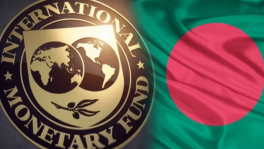China's factory output, retail sales miss expectations in May
Retail sales and investment growth also came in below market expectations, but analysts say underlying activity still looks quite solid, noting headline readings remain highly distorted by comparisons to the pandemic plunge early last year

Growth in China's factory output slowed for a third straight month in May, likely weighed down by disruptions caused by Covid-19 outbreaks in the country's southern export powerhouse of Guangdong.
Retail sales and investment growth also came in below market expectations, but analysts say underlying activity still looks quite solid, noting headline readings remain highly distorted by comparisons to the pandemic plunge early last year.
The Chinese economy has largely shaken off the gloom from the coronavirus slump, but officials warn its recovery remains uneven amid challenges including soft domestic demand, rising raw material prices and global supply chain disruptions.
China's rapid recovery last year and a US rebound this year have sharply boosted Asia's export-reliant economies -- Japan posted its strongest export growth in 41 years on Wednesday -- but resurgent Covid infections and lockdowns are holding back broader-based recoveries.
Chinese industrial production rose 8.8% in May from a year ago, slower than the 9.8% uptick in April, National Bureau of Statistics data showed on Wednesday, missing a 9.0% on-year rise forecast by analysts from a Reuters poll.
In particular, the output of auto vehicles fell 4% from a year earlier, compared with an increase of 6.8% in April, crimped by a global chip shortage.
"This is a normal cyclical slowdown after an economic recovery. In a nutshell, we can see the economic rebound is peaking," said Hao Zhou, senior EM economist Asia, Commerzbank.
"The extent of the slowdown in the second half is key. So far, it's still normal and there's still room for the fiscal policy to play a part later in the year."
Most analysts had expected some moderation in May output due to softer export orders, higher input costs for factories and tighter environmental restrictions on heavy industry.
Outbreaks of Covid-19 in the Pearl River Delta since late May also have brought some key ports to a standstill, economists at Nomura said in a note to clients, though it believes the current spate of infections can be contained in a relatively short period of time.
Fu Linghui, an NBS official, said external risks also remain, such as still rising global Covid-19 infections, an uneven recovery in the world economy and spill-over effects from large stimulus programmes from some countries.
Bright spots
Retail sales rose 12.4% year-on-year in May, weaker than 13.6% growth expected by analysts and down from the 17.7% jump seen in April.
Chinese consumer and business confidence has been picking up thanks to pent-up demand and quickening vaccine rollouts, which are also reviving domestic tourism.
Two-year average growth for retail sales stood at 4.5% in May, faster than the 4.3% in April, in a sign that sales are gradually rebounding, Fu from NBS told reporters.
Fixed asset investment increased 15.4% in the first five months from the same period a year earlier, versus a forecast 16.9% rise, slowing from January-April's 19.9% increase.
Notably, two-year average growth in manufacturing investment turned positive in May.
"What is gratifying is some weak indicators such as consumption and manufacturing investments are showing some improvement," Li Huiyong, deputy general manager at Hwabao WP Fund Management Co., adding that he expects the trend to continue.
China's unemployment rate also continued to drop. Nationwide urban jobless rate fell to 5.0% in May, the lowest since May 2019, from 5.1% in April.
On a month-on-month basis, Capital Economics estimated industrial output growth was unchanged at 0.5%, the pace of investment spending eased slightly and retail sales picked up.
However, Reuters calculations showed real estate investment
in May rose at its slowest pace this year as more smaller towns joined bigger cities in trying to curb red-hot housing prices. New construction starts fell for a second month.
Mixed bag?
Earlier data for May painted a somewhat mixed picture, with export growth easing but imports picking up, fuelled by surging demand and prices for raw materials.
Surging commodities prices pushed China's producer inflation to its highest level in over 12 years, squeezing profit margins for mid- and downstream firms.
Bank lending unexpectedly rose but broader credit growth continued to slow, a trend analysts said could start to weigh on activity in the second half of the year.


 Keep updated, follow The Business Standard's Google news channel
Keep updated, follow The Business Standard's Google news channel














